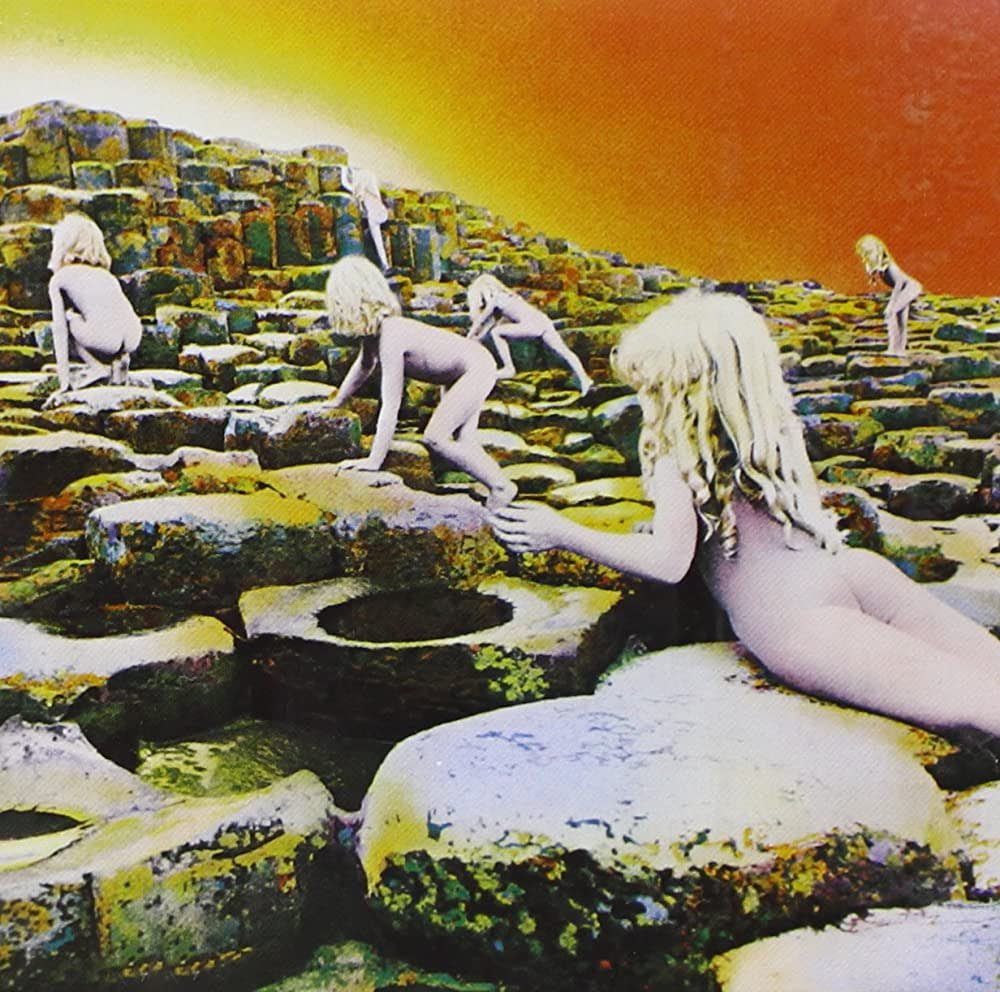ALBUM REVIEW: Houses of the Holy
Led Zeppelin - Houses of the Holy
Released March 28, 1973, this iconic album is celebrating its 50th anniversary, so it is only fitting to write a review. Houses of the Holy was a transition out of the band’s iconic quadruple self-titled albums (Led Zeppelin I, II, III & IV), and it is heard in their sound. Houses of the Holy was the album they began experimenting with genres, delving into funk, reggae, ballads, and some psychedelic. There is also more focus on instrumentation and emphasis on instrumental breaks than in the previous four albums.
“The Song Remains the Same” opens the album and is a fast-paced call and response between the guitar and bass for almost a minute and a half before Robert Plant’s vocals come in. The song was originally an instrumental composition called “The Overture” by guitarist Jimmy Page, but once Plant added lyrics detailing the band’s experience on tour it was given the working title of “The Campaign” before evolving into “The Song Remains the Same.” This song is largely an instrumental celebration with Robert Plant's vocal flourishes appearing every so often, which introduces the audience to the band’s new sound.
“The Rain Song” is the second track on the album and is one of my favorites. This ballad starts with a beautiful balance of electric and acoustic guitar, and uses the same chords as George Harrison’s “Something.” Page was inspired to write this song after Harrison said Led Zeppelin didn’t write any ballads. Plant’s lyrics are full of imagery and nature, adding to the scenery of the title. For the first five minutes of the song, the drums are subdued and offer background support, keeping the feeling of a softer ballad, but at minute five, the drums build with the rest of the instruments and Plant lets his voice carry and wail in his typical ways. The song then quiets down and ends with a beautiful duet between the acoustic and electric guitars. Another one of my favorites, “Over the Hills and Far Away” opens with a twangy acoustic guitar and brings out the hippies. Plant’s vocals are mixed much more forward in this song compared to the first two on the album, and he has more of a structured presence which allows his lyrics about the open road to ring out. The song is structured in two halves with a softer acoustic section and a peppier electric section, and it also contains my favorite outro on the album with a fade out followed by the echo returns of the electric guitar and a few chords on a clavinet. Some describe it as deceiving, but I think it adds texture.
“The Crunge” is Led Zeppelin’s attempt at funk. Heavily inspired by James Brown, drummer John Bonham wrote this funk beat that steps in and out of the beat making it impossible to dance to. Plant also imitates many of Brown’s techniques, and even improvises lyrics at the end of the song parodying Brown's “Take it to the Bridge”. This song was meant to be somewhat of a joke and the band even considered adding dance steps to make it more obvious. The fifth track and the beginning of Side Two are “Dancing Days” which was inspired by sessions they did at Mick Jagger’s home. This song has a catchy guitar lick that runs through the verses and choruses in varying octaves, and that’s somewhat the only memorable part of the song. Plant’s vocals are uncharacteristically uninteresting and have more of a spoken lyric feel than his typical wail.
“D’yer Mak’er” is the album’s reggae song. It originated with Bonham trying to combine reggae and 1950s doo-wop by leaving a short off-beat. It is undeniably groovy and there is still a clear Led Zeppelin flavor with Plant’s sultry vocals and the tone of the instruments, but definitely a step out of their normal sound. “No Quarter” was composed by keyboardist and bassist John Paul Jones. It was originally an option for Led Zeppelin IV but was scrapped and Jones reworked it to include acoustic and electric piano as well as various synthesizers. This song became a live favorite because of its jam style and featured a Jones extended solo in the middle. Out of all the tracks on the album, “No Quarter” is most definitely the song to listen to on psychedelics.
Finishing off the album is another one of my favorites. “The Ocean” is a classic Led Zeppelin tune featuring Plant going ham on vocals, Page playing catchy guitar licks, Jones riffing along, and Bonham holding it steady with syncopated drums. The song begins with Bonham faintly calling out, “We've done four already but now we're steady and then they went, one, two, three, four,” referring to the number of takes they had previously recorded. Additionally, this song features an unusual time signature with a repeated two-measure phrase consisting of one bar of 4/4 and one bar of ⅞. “The Ocean” is the perfect ending to this album as Robert Plant sings out “Ohhhhh, so goooood!”
- Shiloh Gonsky
Genre: Rock / Psychedelic / Funk
RIYL: Jimi Hendrix, Blue Öyster Cult, The Rolling Stones, Rush, Greta Van Fleet
FCC: clean

